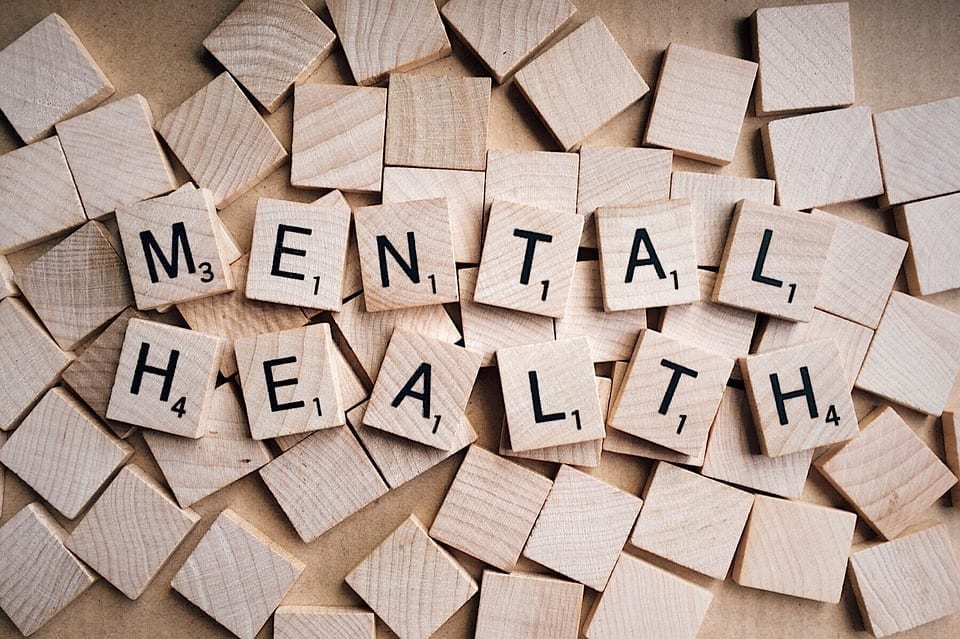By Dr. Narmadeshwar Prasad
- [Director, Parliamentary & Administrative Research Institute (PARI)]
Abstract
The mental healthcare delivery system in India was perhaps never a priority. Yet, of late, the rising suicide cases and the insensitivity of the system towards remedying the apathy seem to be on the mend. The Mental Healthcare Act (MHA) 2017 plays a pivotal role in enabling a fragmented but well-meaning effort.
In what could mark the fulcrum of change is a recently concluded examination of the ‘Mental health care and its management in contemporary times’ by the Parliament of India in April 2023 that brings a ray of hope to over 10 percent of India’s population suffering from myriad mental health issues.
Headed by Bhubaneshwar Kalita, the Parliamentary Standing Committee on Health and Family Welfare, Rajya Sabha, has found value in taking up concerns related to mental health, treatment gaps, and mental health care facilities available in the nation.

Introduction
Severe mental health conditions may debar people from employment, and even when gainfully working, the employees may face inequality at work. The key factors leading to suicide attempts include unemployment, job and financial insecurity, and recent job losses.
As per the World Health Organisation (WHO), yearly job losses due to depression and anxiety could be 12 billion working days amounting to $1 trillion in lost productivity. India’s share in this could easily be enormous considering we have a huge population suffering from mental health conditions, especially after the COVID-19 pandemic.
WHO Director-General Dr. Tedros Adhanom Ghebreyesus drew attention to the far-reaching effects of the COVID-19 pandemic and the huge toll it has taken on people’s mental health in the World Mental Health Report: Transforming Mental Health for All – 2022.
He felt that our attitudes, actions, and approaches needed to change to achieve the global objectives set out in the WHO’s Comprehensive Mental Health Action Plan 2013-2030 and the Sustainable Development Goals (SDG). As per WHO’s estimate, at any given point, 10 percent of the global population suffers from mental illness, and one in four persons is affected at least once in their lifetime. With the world population crossing the 8 billion mark in Nov. 2022, it is estimated that around 800 million people will be suffering from mental health issues.
Mental Healthcare in India
In Jan. 2023, a highly indicting report by India’s National Human Rights Commission (NHRC) to assess the status of the provisions of the Mental Healthcare Act 2017 in public mental healthcare institutions shook the nation to the core.
The Commission pointed out that “all 46 government mental healthcare institutions across the country are in deplorable conditions and depict a very pathetic handling by the different stakeholders”. Deplorable conditions of the mental health institutes recorded by NHRC across India, notwithstanding the severe shortage of doctors and staff, infringe on the human rights of mentally ill patients. Cured patients were often found kept illegally in inhuman conditions within the healthcare premises.
As per the 2016 National Mental Health Survey (NMHS), a landmark survey undertaken by the National Institute of Mental Health and Neurosciences (NIMHANS), the prevalence of mental disorders in adults over 18 in the nation was about 10.6 percent, translating to a whopping 150 million people.
The 12-state survey ( in Assam, Chhattisgarh, Gujarat, Jharkhand, Kerala, Madhya Pradesh Manipur, Punjab, Rajasthan, Tamil Nadu, Uttar Pradesh, and West Bengal) showed that the gender prevalence of lifetime psychotic disorders was higher for males at 1.5 percent as compared to females at 1.3 percent.
There is also a male predominance in alcohol use disorders (9.1 percent for males against 0.5 percent for females) and for bipolar affective disorder (BPAD), 0.6 percent for males as against 0.4 percent for females. However, the situation reverses for depressive, neurotic, and stress-related disorders where females mark a predominance (NMHS, 2016).
The survey points out that only one out of every ten persons suffering from mental health issues gets evidence-based treatment. A huge treatment gap of 50-60 percent for schizophrenia, 88 percent for depression, and 97.2 percent for alcohol use disorders were reported. Studies on epilepsy from India have reported a state-wise treatment gap, ranging from 22 to 95 percent.
Considering the scale of persons needing mental health care services in India, the professionals available are abysmally low. Currently, as per the WHO’s estimate, it stands at about 9,000, with 700 psychiatry graduates added each year.
Therefore, mental health care remains largely unsupported, with only 0.75 psychiatrists per 100,000, where the desirable score is at least 3 per 100,000 (6 per 100,000 for high-income nations). Surprisingly, the central government does not maintain data regarding the number of mental health professionals in the country ( Lok Sabha Parliamentary Question no. 4962; Answered on 01.04.2022.)
Poor Implementation of the MHA 2017
The MHA 2017, a comprehensive landmark legislation by the Indian government, provides for ‘mental healthcare and services for persons with mental illness and to protect, promote and fulfill the rights of such persons…’ with a ten-year timeline, 2027, set out for implementation.
However, six years have elapsed since the Act has been in force, yet the inadequacy of mental healthcare service providers and a dismal budget allocation has not been addressed. Despite the Act mandating the establishment of a state mental health authority, several states are yet to set it up. Further, mental health review boards are missing at the district level, as provisioned by the Act.
Among several provisions of the MHA 2017, gross violations of two key Sections, 19 and 100, have been noted in the NHRC report. The first is the illegal retention of cured patients in mental hospitals, defying the aforementioned Section, which provides for all such patients to be sent back to their homes/halfway homes.
The second involves the state police force, that in many instances, has been found to refuse assistance to patients with mental illness in the admission for treatment. On another front, courts in dealing with the MHA 2017 Sections 101,102 and in Jail cases to 103, too, have been found wanting, refusing to pass orders enabling assistance to mental health patients, especially pertinent to homeless mentally ill individuals.
Many states are still following the Narcotic Drugs and Psychotropic Substances Act (NDPS), 1985, while regulating the de-addiction centres instead of following the provisions of the MHA 2017.
Poor Budgeting for Mental Health
It is critical to scale-up investment in mental health to help steer post-covid mental health exigencies. Mental health care funding in India is about 1 percent of the total national health budget, a mere Rs. 0.84 billion annually. An allocation of Rs. 0.013 billion was put forward for National Tele Mental Health Programme in 2022, while in 2023, an endowment of Rs. 0.01 billion was granted by Rohini Nilekani to the NIMHANS and the National Centre for Biological Sciences (NCBS) to set up the ‘Centre for Brain and Mind.‘
Although the allocations are small, in the face of the acute shortage of mental health care, more such endowments can help build networks of awareness and knowledge as what gets known gets done.
Way Forward
A concerted effort to reduce India’s huge treatment gap is imperative to improve mental health care. The unavailability of psychiatrists or mental health professionals in primary care services, and the low presence of psychiatrists at specialized centres and distant locations keep patients away. Frontline medical staff is key to remedying the situation through well laid out guidelines with a mandate of ‘making every contact count.’
It is essential to bring positive changes; incorporate psychological aspects of care within all care pathways; identify risk factors and symptoms of mental health problems; and signpost and refer appropriately. Psychological first aid (PFA) is a globally recommended training for supporting people during crises and emergencies.
Leaders in multi-specialty healthcare services should be encouraged to gain exposure and model Indian organisations according to the international methodology and strategies, especially in Australia and the United Kingdom, which currently leads global mental health research.
For instance, Australia has 30 leading mental health organizations, such as Way Ahead, Drug ARM, Sane Australia, Grow, Beyond Blue, Mind Australia, and Headspace, which offer advisory services on the call with no charges. In the UK, groups such as the Mind, No Panic, Papyrus (Young Suicide Prevention Society), Samaritans, Sane, and Youngminds offer 24/7 support free of cost.
Apart from an effort to increase budgetary allocations, telemedicine, online help advisories, mobile apps, and sensitization of health workers towards mental health patients are needed to be augmented in India.
Notwithstanding health being a state subject, the central government has helped open separate psychiatry divisions in all 23 newly established AIIMS across India, fully funded by PMSSY. The central government must pump enough funds into organisations like the National Tele Mental Health Programme in order to start online mental health helpline services without losing any further time.
As India is home to a staggering 20 percent of total world mental health cases, it is important for the central government to maintain data on the number of mental health professionals to help effective policy formulations and better planning.
It is, therefore, with immense expectations that the report and recommendations of the Parliamentary Committee on Health and Family Welfare are awaited. By bringing on board all the state authorities, including chief secretaries, and prevailing upon them to expedite the implementation of the MHA 2017 in a time-bound manner, the committee can perhaps ensure the fulfillment of the provisions of the Act.

